Paycheck Protection Program (PPP)
Paycheck Protection Program (PPP)
Loan forgiveness information
Many businesses are relieved to have received PPP funds but are now concerned they may not receive forgiveness. The two primary causes for concern are: 1) not using the loan proceeds properly, and 2) not documenting the correct use of funds adequately. These are common concerns, and we are here to help. Whereas we have received some guidance and information from the SBA and US Treasury Department, we await finalized guidelines. While we wait for the final rules, we wanted to help by sharing what we know now.
Please keep in mind that the information contained in this article is based on our current understanding. Even though we will be updating you with other PPP-related information as it because available, we ask that you do not solely rely on this information to make your financial decisions. It is best for you to engage legal counsel and advice from CPAs and other financial professionals.
How Does Forgiveness for PPP Loans Work? Below are the three primary source documents that summarize the entire program.
- The CARES Act
- The SBA’s PPP Interim Final Rule
- Supplement to the Interim Final Rule for self-employed borrowers
- Apply Now
In summary, once your business is approved for the loan, the lender has 10 days to send you the money. All loan proceeds spent in the first eight weeks from the date that the money was distributed are eligible to be forgiven as long as they are used for approved expenses. To be fully forgiven, a minimum of 75% of the loan amount must be spent on payroll, and a maximum of 25% may be spent on utilities and business lease, rent, or mortgage payments.
Sometime after the eight-week period has passed, the lender will allow the borrower to apply for forgiveness. The lender will have up to 60 days to respond to the request for forgiveness. Because all principal and interest payments are deferred for the borrowers for the first six months, any unforgiven loan balances will be termed out for a period of 18 months at a 1% simple interest rate.
What Documentation Is Needed to Apply for Forgiveness?
We advise all businesses to carefully and transparently document their PPP loan uses—both for use during the forgiveness application, but also for the future in case the government decides to audit any past borrower. The SBA does not accept stories, explanations, or excuses—only evidence. The CARES Act states that borrowers applying for forgiveness must submit documentation verifying the number of FTE employees on payroll and pay rates for the periods, including:
- Payroll tax filings reported to the Internal Revenue Service; and
- State income, payroll, and unemployment insurance filings;
- Documentation, including canceled checks, payment receipts, transcripts of accounts, or other documents verifying payments on covered mortgage obligations, payments on covered lease obligations, and covered utility payments.
- A certification (stating) that—
- The documentation presented is true and correct; and
- The amount for which forgiveness is requested was used to retain
employees, make interest payments on a covered mortgage obligation,
make payments on a covered rent obligation, or make covered utility
payments.
Forgiveness Includes Employment Taxes
The SBA stated, “Under the [CARES] Act, payroll costs are calculated on a gross basis without regard to (i.e., not including subtractions or additions based on) federal taxes imposed or withheld, such as the employee’s and employer’s share of Federal Insurance Contributions Act (FICA) and income taxes required to be withheld from employees. As a result, payroll costs are not reduced by taxes imposed on an employee and required to be withheld by the employer, but payroll costs do not include the employer’s share of payroll tax.”
For example, an employee who earned $4,000 per month in gross wages, from which $500 in federal taxes was withheld, would count as $4,000 in payroll costs. The employee would receive $3,500, and $500 would be paid to the federal government. However, the employer-side federal payroll taxes imposed on the $4,000 in wages are excluded from payroll costs under the statute.
Premier Business Lending is doing our part staying abreast to the new PPP loans coming to fruition as we speak. If you would like more information on the PPP loan, please do not hesitate to reach out and speak to a finance consultant who will happily answer any questions you may have.
Apply for your PPP Loan now: APPLY FOR MY PPP LOAN
Premier Business Lending cannot provide legal, tax, or accounting advice. You should consult your own counsel, accountant and other advisors to evaluate your individual facts and circumstances in connection with your PPP loan and the forgiveness process.

